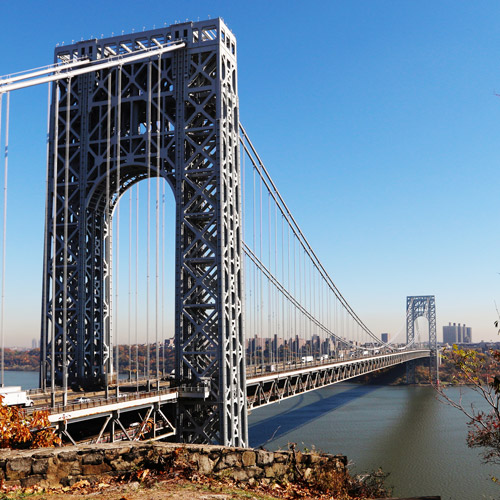Chances are, there’s a Walgreens nearby. In fact, about 76 percent of Americans live within five miles of a store affiliated with the iconic brand. The pharmacy chain has served its neighborhoods for more than 117 years, and now about eight million customers interact in its stores and online daily. But, in the past few years, the Walgreens footprint has been defined by reinvention as the brand pushes further into the health and wellness space. And to continue to do so, it’s now looking to Steve Lamontagne.
Lamontagne got his start in store development in the food retail industry at Almacs, SuperValu, Albertsons, and Ahold before joining the brand strategy company Jackman. In 2013, Amazon recruited him to develop a tech-savvy retail design for its brick-and-mortar stores. Two years later, he joined Walgreens as the division vice president of development, design, and construction before his promotion to his current role, group vice president of store development and care, in 2017.
Now, Lamontagne oversees roughly 200 people on staff as well as a host of outside vendors, who together implement the end-to-end transformations of various Walgreens locations. Lamontagne handles all aspects of store construction from planning to space management, including the designs, rollouts, and maintenance strategies for more than 8,300 sites. As an agent for change, he is now focusing on simplifying Walgreens’ storefront items, launching beauty brands, and forging new clinic partnerships to usher in a new era for the company’s strategic growth.
“The store that was built 15 years ago in a certain suburb on a corner, with the changing demographic around it, may have changed,” Lamontagne explained as part of a RetailSpaces 2015 panel. “We need to look at the offer and the mix within the overall location—some Walgreens stores are more healthcare focused, some are more front-end focused or convenience focused—and through that lens, along with looking at the real estate lease options, start to make some decisions around portfolio rationalization.”
Lamontagne is building on the upgrades established by Walgreens in 2011, when the pharmacy chain first introduced its Well Experience store format. The renaissance featured a new layout that added an “Ask Your Pharmacist” desk and private consultation rooms to make pharmacists more accessible to customers. It also expanded products and services beyond the typical drug store, with treatments for chronic conditions such as diabetes and asthma as well as lifestyle perks such as cafés and boutiques.
The overhaul was further expanded in 2014, when Walgreens merged with Alliance Boots as the first global, pharmacy-led health and well-being enterprise. Then, in September 2017, the pharmacy giant further expanded when it purchased more than 1,900 Rite Aid drug stores. Currently, the company also includes about 400 healthcare clinics, 370 workplace health centers, and 200 health-system pharmacies—evidence of Walgreen’s evolution toward comprehensive care. The following landmark projects in recent Walgreens history mark the way.
Net-Zero Flagship
Location: Evanston, IL
Debut: November 2013
By the year 2020, Walgreens aims to reduce energy usage intensity by about 20 percent, in partnership with the US Department of Energy. A demonstration of this commitment is its 635 Chicago Avenue location, in Evanston. It’s a milestone in the company’s efforts to minimize its environmental impact. Sustainability directed the construction process, including the use of friendly material finishes and the recycling of debris, and the completed project follows suit.
The site, at the intersection of Chicago Avenue and Keeney Street, is designed to use only half the energy typically used in area stores. It houses renewable resources such as two vertical wind turbines, stormwater filtration, and a stepped array of 850 solar panels, with window film that redirects daylight for harvesting. It’s LED lighting system reduces energy usage by almost 30 percent. Other green elements include low-water fixtures, adaptive plants requiring no irrigation, and a carbon dioxide-based refrigeration system with geothermal boreholes.
The overall design aims to produce more energy than is consumed, championing the first step in a crucial part of the Walgreens mission: to create healthy customers through a healthy planet.
West Coast Flagship Store
Location: Los Angeles
Debut: November 2012
Walgreens made its first move to the West Coast with the construction of its 8,000th store at 1501 Vine Street. The famed site, at the iconic corner of Sunset Boulevard and Vine Street, formerly contained a Tower Record store and a Schwab’s drug store. Today, the Walgreens location pays homage to its Hollywood locale through its design and tailored product offerings.
“This flagship location brings not only a unique retail offering to this community but also additional jobs and economic investment that help build a vibrant neighborhood,” said former Los Angeles Mayor Antonio Villaraigosa in a news release for the site’s grand opening.
While the typical Walgreens layout is about 13,900 square feet, the West Coast flagship has 24,000 square feet housing a sushi, coffee, and juice bar. And, it’s much more than a pharmacy, indicating Walgreens’s lifestyle approach. The upscale offerings include the Upmarket Café and a LOOK Boutique with booths featuring No7 cosmetics. A Beverage Wizard kiosk recommends pairings from a selection of more than 700 wines, specialty meats, chocolates, and artisan cheeses. A machine also dispenses 130 varieties of Coca Cola fountain drinks.
State and Randolph Flagship Store
Location: Chicago
Debut: January 2012
The pharmacy chain started with a single Chicago store, founded by Charles R. Walgreen Sr., in 1901. More than a century later, Walgreens brought a new, one-of-a-kind drugstore experience to 151 North State Street with its Well Experience upgrade.
“The customer starts to recognize, ‘Yeah, they’ve done something to the store. It’s clean. It’s refreshed. And therefore I’m going to shop more often,’” Lamontagne says. “Suddenly, you’re starting to get that payback for the investment.”
Nestled in the historic State Street shopping district, the initial State and Randolph Walgreens stood in operation from 1926 to 2005. The new two-story store there features a more modern look, with floor-to-ceiling glass windows and flagship amenities that make it a retail health daily-living destination.
“This store brings together our most innovative, forward-thinking initiatives under one stunning roof, and we couldn’t be more proud to make its debut in our hometown,” said former Walgreens president and CEO Greg Wasson in a press release for the site’s grand opening.
Noel State Bank Building
Location: Chicago
Debut: November 2012
About nine months after opening its first flagship location, Walgreens opened a second flagship store at 1601 North Milwaukee Avenue in Chicago’s Wicker Park neighborhood. While the first site entailed a largely contemporary design, development of the second site prioritized the preservation of the Noel State Bank building’s historic architecture and elements: ornamental terra cotta, pilasters, and cornice wraps adorning the exterior.
Constructed in 1919, the neoclassical building at the corner of North and Damen avenues was originally a bank that once closed after a bank run during the Great Depression. It continued to host different banks over the years, up until Midwest Bank left in 2005. The space then remained vacant until Walgreens stepped in to restore it, in partnership with the city’s Commission on Chicago Landmarks.
The two-year project restored the interior columns and the coffered plaster ceiling, featuring intricate designs of hexagons and griffins. Star of David patterns on the ceiling mirror the six-point star design in the large stained glass window at the center. Walgreens also converted the original bank’s cast-iron safe into a Vitamin Vault that became part of the store’s health and wellness department. The walk-in vault features visible locking gears and original bank lockboxes to display the products.
K.A.I. Total Pavement Management is proud to be a partner to Walgreens and Steve Lamontagne. Together we have delivered construction management solutions to many Happy and Healthy Walgreens’ parking facilities across the country. Congratulations Steve on so many jobs well done, we are looking forward to what tomorrow brings.


